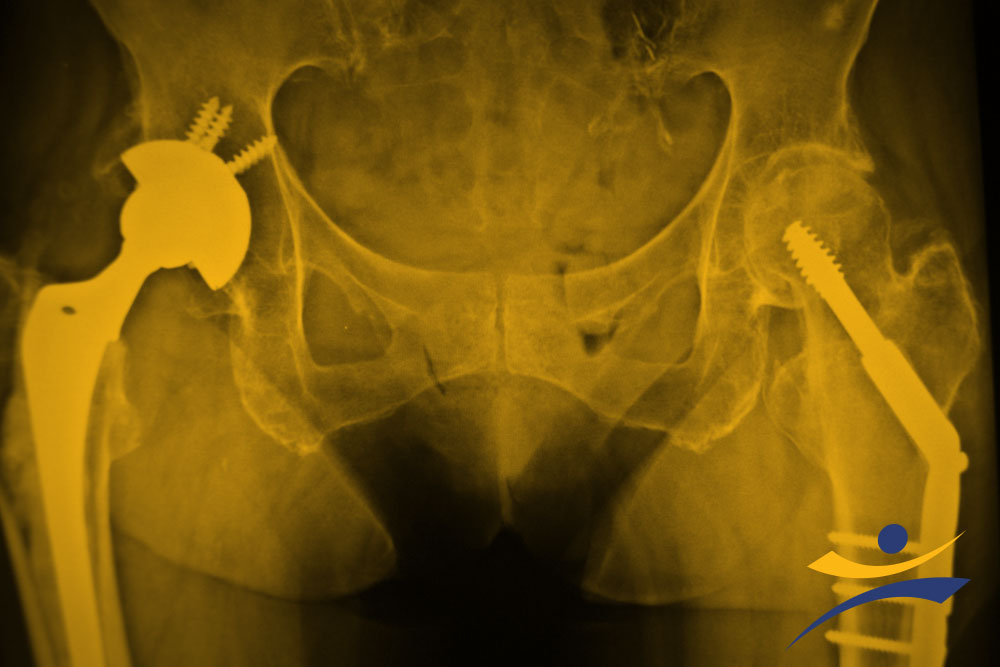
Ask an Orthopedic Series #AskAnOrtho
QUESTION:
“I recently became a candidate for joint replacement surgery – What can I expect during and after the procedure?”
Finding out that you are a candidate for joint replacement surgery can be overwhelming, but if you find yourself living with debilitating joint pain as a result of arthritis, injury, illness, or age, then a joint replacement surgery has likely been recommended to permanently eliminate your pain and improve your mobility and range of motion.
Experiencing pain in your joints can not only keep you from enjoying your favorite recreational activities, but it can also hinder your ability to perform the simplest everyday functions, like walking, bending, climbing stairs, or even sleeping. At the Central Orthopedic Group, we recognize that sometimes medications, injections, and physical therapy can help to relieve pain and discomfort. However, in some cases, the relief is only temporary, and it might be time to consider a joint replacement procedure. When it comes to your joints, extensive experience, education, and state-of-the-art technical training are of the utmost importance when selecting your surgical team. Dr. Jorge Baez of The Central Orthopedic Group, is an Orthopedic Surgeon specializing in Joint Replacement Surgery. Dr. Baez takes us through what a patient can expect during and after a procedure at The Central Orthopedic Group.
Understanding Joint Replacement Surgery
Joint replacement surgery, also known as arthroplasty, is a procedure where a damaged joint is removed and replaced with a prosthetic joint. The most common joints replaced are the hip, knee, and shoulder, but advances in technology have also allowed replacements of the ankle, elbow, and even smaller joints in the hands and fingers. The goal of this surgery is to relieve chronic pain, improve mobility, and enhance quality of life for patients suffering from joint degeneration.
What Happens During a Joint Replacement Surgery?
During the procedure, your surgeon will remove the damaged portions of your joint and replace them with a prosthetic implant designed to mimic the natural structure of your joint. Implants are precisely engineered to restore movement and support weight-bearing activities. Depending on the joint being replaced, minimally invasive surgical techniques may be used, resulting in smaller incisions, less soft tissue damage, and a faster recovery time. Surgeons like Dr. Baez use advanced imaging and computer-assisted navigation to ensure the implant is positioned perfectly for optimal function and longevity.
Preparing for Surgery
Preparation for joint replacement surgery involves several steps to ensure a smooth procedure and recovery. Pre-operative evaluations include blood tests, imaging, and consultations with your orthopedic surgeon and anesthesiologist. You may also meet with a physical therapist to discuss exercises to strengthen surrounding muscles, which can aid in post-operative recovery. Patients are typically advised to arrange transportation home, prepare their living space for limited mobility, and understand post-surgery rehabilitation requirements.
Hospital Stay Expectations
Hospital stays after joint replacement surgery vary from patient to patient, but most individuals can expect to remain in the hospital for two to four days. Early mobilization is encouraged, and physical therapy often begins within 24 hours of the procedure. The therapy team will work with you on walking, balance, and joint exercises to enhance recovery. Pain management plans will also be tailored to your needs to ensure comfort and facilitate active participation in rehabilitation.
Post-Surgery Recovery and Rehabilitation
Once you are discharged, ongoing physical therapy is critical to restoring strength, flexibility, and function to your new joint. Initially, exercises focus on gentle range-of-motion activities to prevent stiffness, followed by progressive strengthening exercises. Committing to your rehabilitation plan helps ensure long-term success and a quicker return to daily activities. Most patients notice a significant reduction in pain within the first few weeks, but full recovery typically takes several months to a year, depending on the type of joint replaced and the patient’s overall health.
Returning to Daily Life
After a joint replacement, patients can usually resume most of their daily activities, such as walking, climbing stairs, and light household chores. Low-impact sports like swimming, cycling, and golf are often encouraged to maintain joint health and cardiovascular fitness. High-impact activities, such as running, basketball, or contact sports, may be limited to protect the longevity of the implant. Your orthopedic surgeon and physical therapist will provide guidance on which activities are safe and when they can be resumed.
Potential Risks and Complications
Like any surgical procedure, joint replacement carries some risks. These may include infection, blood clots, implant loosening, nerve injury, or allergic reactions to materials. Patients are carefully monitored before, during, and after surgery to minimize these risks. Following your post-operative instructions closely, attending follow-up appointments, and reporting any unusual symptoms promptly can significantly reduce the likelihood of complications.
Pain Management After Surgery
Post-operative pain is expected, but advances in pain management strategies help patients remain comfortable while participating in rehabilitation. Pain medications may include oral analgesics, nerve blocks, or local anesthetic injections. Non-pharmacological strategies such as ice therapy, elevation, and gentle exercises are also used to control discomfort and promote healing. Your surgeon will provide a personalized pain management plan to support a smooth recovery process.
Long-Term Benefits of Joint Replacement Surgery
Joint replacement surgery offers numerous long-term benefits, including:
- Elimination or significant reduction of chronic joint pain
- Improved mobility, range of motion, and flexibility
- Enhanced ability to perform everyday activities without discomfort
- Greater participation in recreational and social activities
- Overall improvement in quality of life and independence
Importance of Choosing an Experienced Surgeon
When considering joint replacement surgery, selecting an experienced orthopedic surgeon is crucial. Surgeons like Dr. Jorge Baez bring decades of specialized experience and advanced training in adult reconstruction, ensuring that each procedure is performed with precision and care. Experienced surgeons can anticipate potential challenges, customize implants for each patient, and oversee a comprehensive rehabilitation plan to maximize outcomes.
Innovations in Joint Replacement Technology
Modern joint replacement surgery benefits from technological advancements that improve outcomes and recovery times. Computer-assisted surgical systems, 3D-printed custom implants, and minimally invasive techniques allow for more precise joint alignment, better functionality, and reduced post-operative pain. Materials used in implants, such as advanced ceramics, metal alloys, and strong plastics, have enhanced durability and biocompatibility, providing long-lasting results for patients of all ages.
Frequently Asked Questions
Will I need assistance at home after surgery?
Most patients will require some level of assistance for the first few weeks after surgery. This may include help with bathing, cooking, cleaning, and mobility. Planning ahead and arranging support from family, friends, or a home health aide can make the recovery process smoother and safer.
How soon can I drive after joint replacement?
Driving may be resumed once your surgeon confirms that you have regained sufficient strength, mobility, and reaction time, and that you are no longer taking medications that impair alertness. This usually occurs several weeks after surgery, but varies based on the joint replaced and the individual patient.
Will I need future surgeries?
Modern joint implants are designed to last 15-20 years or longer. However, younger or highly active patients may require revision surgery at some point. Regular follow-ups with your orthopedic surgeon will ensure early detection of any potential issues with the implant.
Meet Dr. Baez

Specializing in joint replacement surgery, with a sub-specialty in adult reconstruction, Dr. Jorge Baez of The Central Orthopedic Group holds hospital affiliations at North Shore University Hospitals (Plainview & Syosset), Mercy Hospital (Rockville Center), St. Joseph’s Hospital (Bethpage), and Melville Surgical Center (Melville). A graduate of NYU, Dr. Baez has been practicing medicine for over 20 years. Fluent in Spanish, Dr. Baez holds numerous academic titles, honors, and accolades over his extensive medical career.
What Can Artificial Joints Be Made Of?
- Ceramic Materials
- Strong Plastics
- Metal Alloys
These materials are designed to mimic natural joint motion while providing durability and resistance to wear over time. The choice of material depends on the joint being replaced, the patient’s age, activity level, and surgeon preference.
Tips for a Successful Recovery
- Follow your surgeon and physical therapist’s instructions carefully
- Attend all scheduled follow-up appointments
- Engage consistently in your prescribed rehabilitation exercises
- Maintain a healthy diet and lifestyle to support healing
- Avoid high-impact activities until cleared by your surgeon
Conclusion
Joint replacement surgery is a life-changing procedure that can dramatically improve mobility, reduce pain, and enhance quality of life. Understanding the process, preparing for surgery, adhering to a rehabilitation plan, and working with an experienced orthopedic surgeon like Dr. Jorge Baez ensures that patients achieve the best possible outcome.
